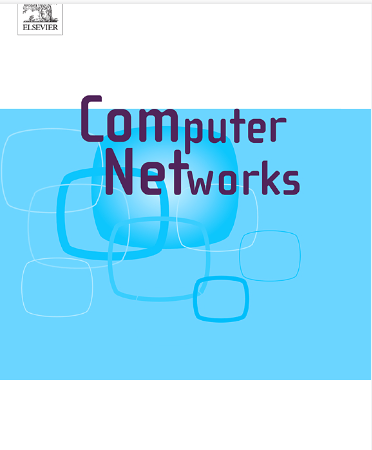Hidden AS link prediction based on random forest feature selection and GWO-XGBoost model
IF 4.4
2区 计算机科学
Q1 COMPUTER SCIENCE, HARDWARE & ARCHITECTURE
引用次数: 0
Abstract
Internet AS-level topology measurement is crucial for improving network stability and security. The presence of hidden AS links poses a challenge for accurately measuring the AS-level topology. Link prediction serves as a primary technical approach for discovering hidden AS links. However, the effectiveness of existing methods is susceptible to features and model hyperparameters, necessitating improvements in prediction performance. In this paper, a hidden AS link prediction method based on random forest feature selection and a GWO-XGBoost model is proposed. First, BGP data is preprocessed to eliminate erroneous information from AS paths, and suitable AS triplets for training the prediction model are constructed. Then, the traffic volume and ratio at the first and last nodes of these triplets are analyzed to extract four new features. These are combined with features extracted by typical methods to form an initial prediction feature set. Additionally, the random forest algorithm is used to select initial features, remove redundant features, and construct an optimal feature subset. Finally, the initial prediction model XGBoost is trained using the optimal feature subset, while the Grey Wolf Optimizer (GWO) algorithm is employed to search for optimal hyperparameters, thus constructing a fusion model GWO-XGBoost that achieves hidden AS link prediction. Extensive experiments are conducted on the AS-level topology with 81,998 nodes and 401,925 links collected from RouteViews and RIPE RIS projects. The results show that the proposed method has significant advantages over the typical prediction methods TopoScope and LOC-TopoScope. The prediction accuracy increases by 5.30% and 3.96%, respectively, and the number of discovered hidden AS links increases by 23.76% and 6.08%, respectively.
基于随机森林特征选择和GWO-XGBoost模型的隐藏AS链路预测
Internet as级拓扑测量对于提高网络的稳定性和安全性至关重要。隐藏的自治系统链路的存在给精确测量自治系统级拓扑带来了挑战。链路预测是发现隐藏自治系统链路的主要技术方法。然而,现有方法的有效性容易受到特征和模型超参数的影响,需要改进预测性能。本文提出了一种基于随机森林特征选择和GWO-XGBoost模型的隐藏AS链路预测方法。首先,对BGP数据进行预处理,去除AS路径中的错误信息,构造适合训练预测模型的AS三元组;然后,对三联体的第一节点和最后节点的流量和比例进行分析,提取出四个新的特征。将这些特征与典型方法提取的特征相结合,形成初始预测特征集。此外,采用随机森林算法选择初始特征,去除冗余特征,构造最优特征子集。最后,利用最优特征子集对初始预测模型XGBoost进行训练,并利用灰狼优化器(Grey Wolf Optimizer, GWO)算法搜索最优超参数,构建实现隐藏AS链路预测的融合模型GWO-XGBoost。从RouteViews和RIPE RIS项目中收集了81,998个节点和401,925条链路,在as级拓扑上进行了广泛的实验。结果表明,该方法与典型的TopoScope和LOC-TopoScope预测方法相比,具有明显的优势。预测准确率分别提高了5.30%和3.96%,发现的隐藏AS链路数量分别提高了23.76%和6.08%。
本文章由计算机程序翻译,如有差异,请以英文原文为准。
求助全文
约1分钟内获得全文
求助全文
来源期刊

Computer Networks
工程技术-电信学
CiteScore
10.80
自引率
3.60%
发文量
434
审稿时长
8.6 months
期刊介绍:
Computer Networks is an international, archival journal providing a publication vehicle for complete coverage of all topics of interest to those involved in the computer communications networking area. The audience includes researchers, managers and operators of networks as well as designers and implementors. The Editorial Board will consider any material for publication that is of interest to those groups.
 求助内容:
求助内容: 应助结果提醒方式:
应助结果提醒方式:


